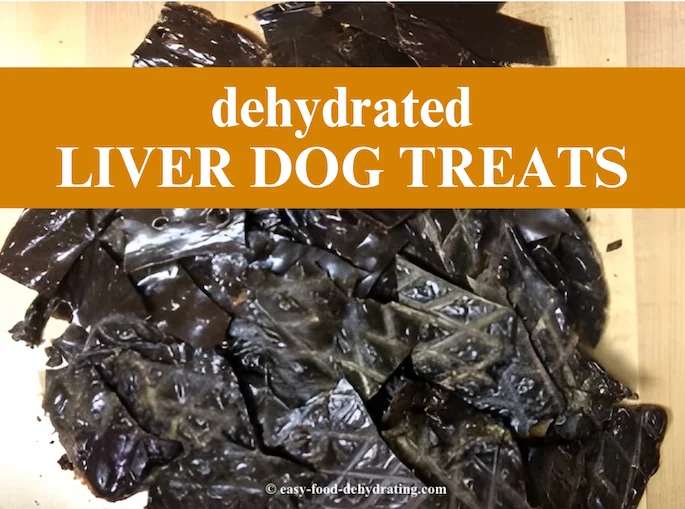How to Make Cat Treats: Easy,
Healthy Snacks Your Feline Will Love!

Susan Gast | Author and blogger at Bored Boomers, Beesville Books, A New Sober You and Easy Food Dehydrating
Hi! I'm glad you are here to check out how to make cat treats for your kitty cat!
 Jimmy - enjoying homemade treats!
Jimmy - enjoying homemade treats!Welcome to our guide on creating homemade cat treats! The handsome tabby above is Jimmy, thoroughly enjoying his bowl of treats.
But the real inspiration behind this page is Gracie, my picky little food critic who’s always on the hunt for something new and exciting to nibble on.
 Hi, I'm Gracie!
Hi, I'm Gracie!Whether your cat is as treat-loving as Jimmy or as selective as Gracie, you’ll find plenty of ideas here to delight your furry friend.
Let’s get started on making something special! 🐾
Why Make Homemade Cat Treats?
Here are some good ingredients to make healthy homemade cat treats in a dehydrator. Use cooked meats, not raw.
Best Ingredients for Homemade Cat Treats
Meats Cats Love
- Lean Meats: Chicken, turkey, beef, salmon. Remove skin/bones and cut into thin strips before drying. Follow my guide to meat dehdyration here.
- Fish: All pre-cooked tuna, salmon, whitefish. Flake before dehydrating. See how to dehydrate seafood here.
- Eggs: Hard-boil an egg, slice it thinly, and dry it into crunchy bits.
- Cheese: Low-fat cheeses like cheddar, swiss, and mozzarella cut into small cubes.
A note about dairy: Some cats are sensitive to dairy products, so introduce cheese in small amounts to ensure it suits your cat.
Safe and Nutritious Fruit
- Fruits: Apples, bananas, blueberries, cranberries, pineapple. Cut small or puree before dehydrating. See my "how-to" page for drying fruit here.
Healthy Veggies for Cats
- Vegetables: Green beans, sweet potato, pumpkin, carrots. Slice thinly or grate before dehydrating. See my comprehensive dehydrating veggies page here.
Cat-Friendly Grains & Herbs
- Grains: Oats, barley, rice. Cook first then dry into crunchy cereals.
- Herbs: Catnip, cat grass*. Dehydrate fresh leaves. See our free "How to Grow & Dehydrate Herbs" eBook here.
*CAT GRASS... It's a healthy treat for felines that is made with of any of these grasses: wheatgrass, barley grass, oat grass, or rye grass. Wheatgrass is the most popular.
You can grow them at home in small pots and what's good about this is that while most houseplants are toxic to cats, these four specific cat grasses are NON-toxic. Keep the cat grass watered and in a sunny spot (just like cats love to lie in sunny spots!), and the plants last a couple of weeks.
While there are many safe and nutritious options, some foods can harm your cat. Avoid giving cats ingredients like onions, garlic, raisins, grapes, chocolate, and macadamia nuts, which can be harmful to cats. Go light on sugars.
Make treats the right size and texture for cats. Combine ingredients for variety. Allow treats to fully dry until brittle.
Store in an airtight container like a Mason jar for up to 2 months. Monitor your cat's weight and adjust treats as needed.
🐾 Can Cats Eat Fruit? A Quick Guide
Now that we’ve covered safe proteins, let’s explore fruits that can add variety to your cat’s diet.
Here are some fruits that are safe for cats:
- Apples - A great source of Vitamins A & C. Remove core and seeds first.
- Bananas - Excellent source of Potassium and Magnesium. Just a few bites for a treat.
- Blueberries - Loaded with antioxidants. Only feed 1-2 berries at a time.
- Cantaloupe - Good source of Vitamins A & C. Feed just a spoonful as a treat.
- Cranberries - Provides Vitamin C. Dried or fresh. Just a teaspoon or two.
- Mango - High in Vitamin C and fiber. A few chunks are safe.
- Pineapple - Contains bromelain, an enzyme that aids digestion. Only a few small bites of flesh.
- Pumpkin - Nutritious and boosts fiber. Pureed pumpkin only, not whole or in pieces.
- Watermelon- High in water & great for hydration. An occasional small wedge is fine.
ALL of the above fruits are listed on our How to Dehydrate Fruits page.
Foods to Avoid in Cat Treats
Avoid fruits high in citric acid like oranges, lemons, limes, and grapefruit, as it may cause gastrointestinal upset.
Only feed fruits sparingly, as too much natural sugar can cause diarrhea. Introduce new fruits slowly and monitor your cat’s reaction.
Always remove rinds, skins, pits, and seeds first, as those parts can be toxic to cats.
🤔 FAQ: Common Questions About Homemade Cat Treats
What’s the best way to make salmon cat treats?
What’s the best way to make salmon cat treats?
See our "salmon" suggestion in the "fish" area above - in the pink box, and in the free eBook Homemade Dehydrated Cat Treats in the sidebar on a desktop, or in the content above - on your phone.
How long does it take to dehydrate cat treats?
How long does it take to dehydrate cat treats?
The drying time depends on the type of ingredient and the thickness of the slices. For example:
- Meats and Fish: Typically 4–6 hours at 145°F (63°C).
- Fruits and Vegetables: Usually 6–10 hours at 135°F (57°C).
Always check that treats are fully dried and brittle before storing to prevent spoilage. Refer to your dehydrator’s manual for precise instructions.
Can I use an oven instead of a dehydrator?
Can I use an oven instead of a dehydrator?
Yes, you can use a standard oven if you don’t have a dehydrator! Set your oven to the lowest temperature, usually around 150–170°F (65–75°C), and leave the oven door slightly ajar to allow moisture to escape. Keep an eye on the treats and turn them occasionally to ensure even drying. Oven-dried treats may take longer, so patience is key!
Tips for Introducing Picky Eaters to New Treats
- Start Small: Offer a tiny piece of the dried food alongside their regular meal. Gradually increase the portion as they become accustomed to the new texture and flavor.
- Mix It In: Crumble the dried treat and mix it with a small amount of their regular food to blend familiar and new flavors. This can make the transition smoother.
- Rehydrate the Treats: Soak the dried food in a bit of warm water or low-sodium broth to soften it. Some cats may prefer the familiar texture of wet food initially.
- Pair It with a Favorite: Serve the dried treat alongside something your cat loves (like a bit of tuna or a favorite snack) to encourage them to try it.
- Use Positive Reinforcement: Praise your cat or offer affection when they show interest in the new food. Avoid forcing the treat, as this could create a negative association.
- Experiment with Flavors: Test different ingredients like chicken, salmon, or beef to discover what your cat enjoys most. Some cats are particular about certain tastes.
- Serve Fresh: Ensure the dried treats are stored in an airtight container to maintain their flavor and crunch. Stale treats might be off-putting.
- Be Patient: Cats are creatures of habit, and it might take several attempts before they warm up to a new food. Stay consistent and keep offering small amounts.
- Observe Their Reaction: Monitor your cat’s body language and appetite. If they consistently reject the food, adjust the approach or try a different treat recipe.
"If we measured our affection toward others
by how many nicknames we bestow upon them,
our pets would be the most loved."
— Carrie Brownstein
"If we measured our affection
toward others by how many
nicknames we bestow upon
them, our pets would
be the most loved."
— Carrie Brownstein
Free Resource
Don't forget to grab your free Six Simple Steps eBook! It’s packed with tips for dehydrating everything from fruits and veggies to dog treats. Get it here.
Before You Go...
If you like the content, please give me some love by clicking on the 🩷 in the lower right hand corner (on just about all my pages). This signals to me that you find it enjoyable and useful. Thank you so much!










